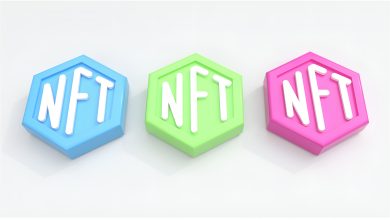Understanding the Cryptocurrency Market Trends
Have you ever wondered what drives the often radical shifts in cryptocurrency market trends? Why do some people make astronomical profits from their crypto investments, while others stumble upon substantial losses? The answers to these cryptic queries often lie in understanding the powerful undercurrents beneath the frenetic surface of the crypto world – the disruptive blockchain technology.
This complex network of digital ledgers and cryptographic protocols fuels every crypto transaction. But that’s not all. It’s also the launching pad for a slew of innovative financial applications, making the blockchain landscape much more than just a playground for digital currencies. Curious? Let’s plunge into the dynamic sphere of the cryptocurrency market together.
Key Takeaways
- The cryptocurrency market is extremely dynamic, influenced by a multitude of variables.
- Success in crypto investments requires a deep understanding of market trends and how to navigate them.
- Blockchain technology forms the backbone of cryptocurrency operations, offering a decentralized network for secure, anonymous transactions.
- Understanding blockchain technology is key to grasifying the principles of crypto functioning and predicting future market trends.
- Crypto investments don’t just offer financial returns, but also open the doors to revolutionary financial applications driven by blockchain.
The Evolution of the Cryptocurrency Market
As we delve deeper into the world of cryptocurrencies, it’s crucial we appreciate the noteworthy journey this dynamic sphere has traversed. This section takes you on a captivating trip into the birth, growth, and digital assets advancements of virtual currencies’ market – the fascinating world where computing breakthroughs intersect with financial innovation.
The Inception of Virtual Currencies
The story of virtual currencies begins with the mysterious inventor of Bitcoin, Satoshi Nakamoto. The creation of Bitcoin in 2009 not only sparked the birth of a new and intriguing type of asset but also led to the genesis of an array of similar digital currencies. This revolutionary digital asset was designed to facilitate peer-to-peer transactions seamlessly by eliminating intermediaries, thus spawning the much-needed disruption in the traditional financial systems.
Key Milestones in Crypto History
Since the first bitcoin transaction, the crypto universe has been continuously evolving, marking various milestones along its path. Here is a quick overview of some notable landmarks in the realm of virtual currencies:
| Year | Milestone |
|---|---|
| 2009 | Launch of Bitcoin, the first cryptocurrency |
| 2010 | First commercial transaction using Bitcoin |
| 2012 | Inception of Ripple, offering faster transactions and interoperability between other currencies |
| 2015 | Launch of Ethereum, introducing smart contracts and enabling decentralized applications |
| 2020 | Bitcoin hits an all-time high in the market, reflecting growing interest from institutional investors |
The Impact of Technological Advancements on Digital Assets
Technological advancements have played a pivotal role in shaping the trajectory and functionality of virtual currencies. Enhancements in security protocols, the development of smart contracts, and the integration of advanced features have not only bolstered the appeal of digital assets but also expanded their use cases beyond just being a medium of exchange or a store of value.
With the advent of innovations like Decentralized Finance (DeFi) and Non-fungible tokens (NFTs), virtual assets continue to transform digitization in finance. Such progress underlines the versatility and scalability of these digital assets and demonstrates the endless possibilities that lie ahead in the crypto landscape.
Introduction to Blockchain Technology
At the heartbeat of every cryptocurrency lies a fundamentally transformative technology known as blockchain technology. Conceived as a decentralized ledger, it forms the core basis upon which crypto transactions find their transparency, security, and trustworthiness.
Decentralized Ledger: A game-changer in the digital economy
The premise behind a decentralized ledger breaks away from the conventional centralized systems. Unlike traditional transaction systems that rely on a central authority or intermediary (like banks), blockchain operates on a decentralized network of computers called nodes. Each of these nodes maintains a copy of the ledger, and every time a new transaction is made, it’s recorded across all nodes.
In such a system, manipulating the ledger becomes virtually impossible as it would require changing the information on the majority of the nodes, thus ensuring the integrity and security of the blockchain.
A quick look at the fundamentals of Blockchain
| Blockchain Fundamentals | Description |
|---|---|
| Decentralization | No central authority, ensuring full transparency and resistance to censorship. |
| Immutable Ledger | Once a block is added to the blockchain, data within it can’t be altered. |
| Security | Through cryptography algorithms, data integrity is ensured and tampering is nearly impossible. |
| Blockchain Applications | Beyond cryptocurrencies, applications extend to smart contracts, supply chain management, healthcare records and more. |
Blockchain is often associated with crypto transactions due to its pivotal role as the underlying technology for cryptocurrencies. The secure and transparent nature of blockchain technology makes it an ideal choice to handle sensitive data and financial transactions, thereby empowering the concept of a trustless system.
This trustless system, devoid of any intermediaries, is of pivotal importance as it allows peer-to-peer transactions to occur in a direct and transparent way. Blockchain’s ability to distribute trust across the network leads to lower costs, speedier transactions, and improved security.
Blockchain: The powerhouse technology fueling cryptocurrencies
Blockchain’s decentralized ledgers, coupled with cryptographic security, create an environment where transactions are secure, trustless, and seamless, making them indispensable to the functioning of cryptocurrencies, a game-changing application of this technology.
Overview of Major Cryptocurrencies: Bitcoin and Altcoins
In the realm of digital currencies, Bitcoin holds the mantle as the pioneer, setting the foundations and significantly influencing the landscape. Yet, the bitcoin market is merely one facet of the broader cryptosphere. An expansive array of altcoins enriches the ecosystem, each presenting unique challenges and opportunities for investors. Let’s delve into the dynamics of these markets and gain insights into compelling investment strategies.
Distinguishing Bitcoin Market Dynamics
The bitcoin market undeniably sets the tone for the global crypto scene. As the first and largest cryptocurrency, Bitcoin has a profound impact on shaping market trends and behaviors. The Bitcoin price movements can prove to be a significant marker for the wider market sentiment. Factors that influence the Bitcoin market range from macroeconomic indicators and regulatory changes to technological advancements and market speculation. Understanding these dynamics beyond the price can help investors predict potential trend shifts in the Bitcoin market and hedge their risks accordingly.
Exploring the Diversity of the Altcoins Market
When stepping beyond Bitcoin, investors enter a diverse altcoins market teeming with potential. Altcoins – shorthand for ‘alternative coins’- encompass all cryptocurrencies that are not Bitcoin, offering an array of unique opportunities and risks. Each altcoin has its own distinct technology, use case, and community behind it, meaning, the performance of one altcoin does not necessarily mirror another.
These altcoins often categorize into sectors, reflecting their primary use cases. For instance, finance-focused cryptocurrencies, privacy coins, exchange tokens, and governance tokens, among others. Below is a glance at the diverse range of altcoins:
| Altcoin | Use case |
|---|---|
| Ethereum | Smart Contracts & DApps |
| Ripple | Cross-border Payments |
| Cardano | Blockchain-based Infrastructure |
| Monero | Privacy Focused |
Investment Strategies for Major Crypto Players
Given the dynamic landscape of cryptocurrencies, formulating effective investment strategies can make the difference in capturing profit and mitigating losses. It’s vital to evaluate each cryptocurrency independently, understanding its inner workings, and its role in the broader crypto world.
Typical investment strategies include holding for the long run (HODLing), swing trading, or position trading. Further, diversification amongst different cryptocurrencies can reduce risk and potentially increase returns. Diversifying a portfolio can encompass several altcoins along with Bitcoin, depending on each investor’s risk profile and investment goals.
Note, the world of cryptocurrencies is intricate and volatile. As such, building knowledge, maintaining patience, and continuously adapting to the dynamic crypto environment are crucial components in formulating successful crypto investment strategies.
Deep Dive into Decentralized Finance (DeFi)
Welcome to the groundbreaking world of decentralized finance. Known colloquially as DeFi, this innovative aspect of financial technology is rewriting the rulebook and paving the way towards a more universally accessible financial future.
Decentralized finance leverages financial blockchain applications to provide financial services without intermediaries. In comparison to traditional banking and monetary systems, this format of finance operates without central authorities, aiming to create a more democratized economic landscape.
- Operates Without Central Authorities: DeFi operates on a network of computers, making it resistant to control by a single entity. This contrasts with the centralized nature of traditional finance, where banks or governments exert control.
- Universal Accessibility: DeFi often leverages blockchain technology to eliminate the need for intermediaries, so anyone with an internet connection can potentially access DeFi platforms.
- Transparency: Blockchain’s public ledger ensures that transactions made in DeFi platforms are transparent, creating an environment of trust amongst users.
“With every day, we’re witnessing how DeFi elucidates a promising new chapter in the history of finance. This blockchain-based phenomenon, however protean it may appear, holds an untapped potential to revolutionize how we view and interact with traditional finance.”
Let’s delve deeper into some prominent applications in the DeFi landscape that are making waves:
| DeFi Application | Description |
|---|---|
| Decentralized Exchanges (DEXs) | DEXs are online platforms that allow peer-to-peer cryptocurrency transactions to take place directly, without an intermediary. |
| Lending and Borrowing Platforms | These platforms connect borrowers and lenders directly, enabling them to interact on their terms and conditions. They often use smart contracts to automate the agreement terms, enforce the loan’s term, and distribute interest. |
| Stablecoins | Stablecoins are cryptocurrencies designed to minimize the volatility of the price of the stablecoin, relative to some “stable” asset or a basket of assets such as fiat money. |
| Tokenization | DeFi enables users to digitally represent ownership of an asset (real or virtual), improving its liquidity, transparency, and accessibility. |
| DeFi Derivatives | These are smart contracts that track the price of an underlying asset, enabling individuals to hedge risk and gain exposure to various assets without owning them. |
As we move forward, the impact of decentralized finance and its implication on the trajectory of the global financial landscape will be something to observe closely. Maintaining an understanding of this paradigm-shifting concept is integral to staying ahead in the rapidly evolving world of cryptocurrencies and blockchain technology.
Cryptocurrency Market Analysis Techniques
As you delve further into the cryptocurrency world, understanding market analysis techniques becomes essential. These techniques involve evaluating the intrinsic value of cryptocurrencies and their market dynamics to inform buy, hold, or sell decisions. Three key techniques are foremost in this domain: fundamental analysis, technical analysis, and sentiment analysis.
Fundamental Analysis of Crypto Investments
First, we have fundamental analysis. This method is about understanding the inherent value of a cryptocurrency. It involves looking at both tangible and intangible factors, including the technology backing the cryptocurrency, its use cases, demand, technological partnerships, and the strength of the team behind the project.
Consider it as similar to doing your due diligence before investing in a start-up. You would want to know all about the business: what it does, how it generates revenue, what are its future plans, and the people running it.
Just like that, for cryptocurrencies, you would look at their white papers, market saturation for their use, competitive landscape, and other micro and macroeconomic factors.
Technical Analysis and Market Indicators
Second, there is technical analysis. Unlike fundamental analysis, which tries to find out the intrinsic value of the cryptocurrency, technical analysis predicts future price movements based on historical market data, primarily price and volume. Here, you work on the assumption that history repeats itself.
Traders using technical analysis operate on three basic principles:
- Market price reflects all information available.
- Price movements are not random.
- ‘What’ is more important than ‘why’.
There are numerous techniques and methods to conduct a technical analysis, including predicting price movements using a series of trend lines and indicators, most of which are represented as charts on crypto trading platforms.
Sentiment Analysis: Gauging Market Emotions
Lastly, we have sentiment analysis, which is all about understanding the overall feel or tone of the market. By gauging the market sentiment, you try to get a sense of how the market participants are feeling as a whole.
This method can be specially useful in highly speculative and volatile markets like cryptocurrencies, as the prices are often driven by emotions rather than inherent or intrinsic value.
| Market Analysis Technique | What It Focuses On | Suitable For |
|---|---|---|
| Fundamental Analysis | Intrinsic value | Long-term investors |
| Technical Analysis | Price and volume historical data | Short-term traders |
| Sentiment Analysis | Overall market emotions | Both short-term traders and long-term investors |
As with all investments, understanding the market and doing your research is key. Use these cryptocurrency market analysis techniques to gauge the potential risks and rewards to make more informed decisions.
The Role of Trading Exchanges in Cryptocurrency Markets
In the ever-growing universe of cryptocurrency, trading exchanges hold immense significance. Serving as digital asset platforms, they not only facilitate the buying and selling of cryptocurrencies but also present a snapshot of the overall health and vibrancy of the cryptocurrency market. These platforms enable the dynamic and secure process of cryptocurrency transactions, making them vital components of the crypto sphere.
Being a crypto investor, the choice of trading exchanges can make all the difference in your investment journey. Hence, focus on selecting reliable and efficient digital asset platforms is of paramount importance. To further emphasize this, consider the following key factors when choosing a suitable cryptocurrency trading exchange:
- Security & reliability: Safeguarding your digital assets should be the priority. Look out for platforms with robust security measures and a strong track record in safe transactions.
- Liquidity: Platforms with high liquidity allow for smooth transactions without substantial impacts on market prices.
- Trading Pair Availability: Choose exchanges that offer various trading pair options to provide flexibility and wider trading opportunities.
It’s important to understand that not all trading exchanges are created equal, and each comes with its unique features, advantages, and shortcomings. Here’s a brief yet informative table comparing few prominent trading platforms based on crucial evaluation parameters:
| Trading Exchange | Security | Liquidity | Trading Pair Options |
|---|---|---|---|
| Binance | High | High | Wide Range |
| Coinbase | High | Medium | Medium Range |
| Kraken | Medium | Medium | Narrow Range |
In conclusion, trading exchanges play a significant role in shaping the cryptocurrency market and your experiences within it. Your informed decisions about the right digital asset platform can set the stage for fruitful cryptocurrency transactions and investment success.
Understanding the Cryptocurrency Market Trends
In navigating the complex world of cryptocurrencies, understanding market trends is crucial. Keeping your finger on the pulse of the digital assets realm, spotting trends, and forecasting their directions can help you make sound investment decisions. This section explores the intricacies of trend patterns in digital assets and the impact of global events on cryptocurrency markets.
Spotting Trend Patterns in Digital Assets
Identifying and understanding trend patterns in digital assets is an essential skill for successful crypto trading. These trends often revolve around bullish (upward) and bearish (downward) market phases. By observing these patterns, you are better positioned to make strategic investment decisions.
Key trend patterns in digital assets:
- Uptrend or Bullish Trend: Characterized by the overall increase in the price of the asset over time.
- Downtrend or Bearish Trend: The asset’s price decreases over a period, indicating a falling market.
- Sideways or Horizontal Trend: The price of the digital asset remains relatively stable, going neither up nor down significantly.
Determining these patterns relies on analyzing historical data and current market situations. This data can be visualized in various forms, including line, candlestick, and bar charts, to help traders see trends and forecast potential price movements.
How Global Events Affect Cryptocurrency Markets
Global events substantially impact the volatility and trends within the cryptocurrency markets. From regulatory changes and technological advancements to macroeconomic factors, the ripple effects of these events often dictate the market’s trajectory.
| Global Event | Impact on the Cryptocurrency Market |
|---|---|
| Regulatory Changes | When a country introduces new regulations or bans cryptocurrencies, the market often reacts with price volatility. |
| Technological Advancements | Advancements in blockchain technology, introduction of new crypto coins, or improvements in crypto trading infrastructures can lead to market optimism, triggering price surges. |
| Macroeconomic Factors | Events disrupting the global economy—like a recession—can lead investors to seek refuge in cryptocurrencies, driving up their value. |
By coupling an understanding of market trend patterns with knowledge of how global events impact the cryptocurrency market, you can make informed decisions surrounding your cryptocurrency investments.
Risk Management and Diversification in Crypto Investments
When it comes to investing in cryptocurrency, risk management and investment diversification are your two most effective weapons against the turbulence of the digital currency market. Through the strategic allocation of investments across a variety of assets, you can navigate the highs and lows of market volatility with greater confidence.
Good risk management involves not only assessing the inherent risks in your investments but also preparing for the unexpected. It can be as simple as setting a hard cap on potential losses, or as involved as mastering complex hedging techniques.
“Diversification is protection against ignorance. It makes little sense if you know what you are doing.” – Warren Buffet
However, awareness of investment diversification alone isn’t enough unless accompanied by a strong understanding of how to actually diversify your investments effectively.
In terms of your crypto portfolio, diversification isn’t just about spreading your investments thinly across multiple coins. It’s about meticulously selecting a mix of digital currencies that aligns with your risk tolerance and investment goals, and then continually adapting your portfolio as market conditions evolve.
| Investment Type | Benefits | Risks |
|---|---|---|
| Blue-chip Cryptocurrencies | Relatively stable, demonstrate steady growth over time | Lower potential ROI compared to newer, riskier coins |
| Emerging Cryptocurrencies | Higher potential returns | Increased risk due to market volatility and lack of historical data |
| Cryptocurrency Projects | Opportunity to invest in disruptive technology | Risk of project failure, lack of liquidity |
While the allure of astronomical returns can often lure investors towards riskier, lesser-known coins, a balanced crypto portfolio generally leans towards those with a more established market presence.
Remember, diversification doesn’t guarantee profits and isn’t a one-size-fits-all. It merely spreads the risk to guard your investments against sudden market movements. The key is to find a balance that matches your investment goals with your tolerance for risk.
Conclusion
As we find ourselves at the helm of this ever-evolving digital age, navigating the vast seas of the cryptocurrency market can be both an exhilarating and daunting endeavour. Seasoned and novice investors alike must equip themselves with essential knowledge and strategic foresight to be able to preempt and respond to currents and waves of change.
Future Prospects of the Cryptocurrency Market
Given the perpetual tinkering and innovation at play within the realm of blockchain technology, the future cryptocurrency market poses a blank canvas for amplified growth and unprecedented shifts. Investors may potentially witness the birth of new digital assets, shifting dynamics in the worth and utility of existing cryptocurrencies, and evolving methodologies of crypto mining and transactions. Remember, anticipation is key to your investment strategy, and successful anticipation stems from a clear understanding of the larger picture and diligent tracking of emerging trends.
Leveraging Knowledge for Investment Success
Your journey in the world of cryptocurrencies is largely underpinned by your grasp of the concepts surrounding it, and your ability to adapt in response to its unique challenges. Arming yourself with investment knowledge increases your odds of effective decision-making, risk management, and subsequently, the growth of your digital assets. The trajectory of your success ultimately hinges on finding the perfect balance between risk and reward that aligns with your personal financial objectives.
In closing, we hope this guide has enriched your understanding of the intricacies of the cryptocurrency market. Continue to feed your curiosity and educate yourself to remain at the forefront of this exciting financial frontier. Proceed with prudence, and let your well-informed strategies guide you towards resilience and prosperity in the diverse landscape of digital currencies.






